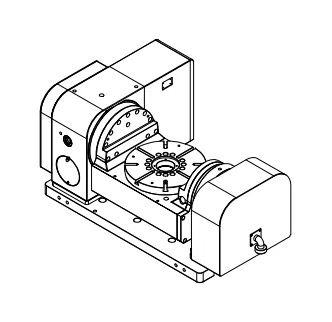The drive parts connected to the input shaft of the splitter include: pulley, sprocket, synchronous pulley, gear, coupling, etc. Due to the load pulsation, the camshaft torque has a positive and negative change in one cycle. The cam characteristics can only be exerted when the camshaft rotates at a certain speed. Therefore, the torque applied to the splitter by the instability of the camshaft rotation will increase significantly, which will have a bad influence on the intermittent movement. Therefore, slip-producing belts, pulsating chains, and backlash gears cannot be used on the camshaft. The belt or chain must be tightened. The gears are used with high precision and the meshing clearance must be eliminated. There are many advantages of using a synchronous belt: it is synchronized with other actions; the conveyor belt and the pulley have friction without creating a gap; the vibration is small, and high speed can be achieved; the large-diameter pulley is selected, and the flywheel effect is good. In general, the intermittent divider input shaft is formed as a shaft input key connection structure.
During the transmission process, due to the instability of various factors and the pulsation of the driving load, it is easy to loosen the key connection and cause a fitting gap. The movement of the input shaft is discontinuous, resulting in an impact. In this way, not only the connecting piece is easy to damage the cam and needle bearing inside it. Therefore, it should be carefully adjusted when connecting, and it should be checked frequently during use. There are two types of splitter output transmission: direct transmission. Indirect transmission. Indirect drive should try to avoid reverse impact. The structures connected to the output end of the splitter are as follows: butt joint with the shaft through flanges or sleeves. The shaft-hole fit is connected by a key. connection between flanges. Due to the intermittent output, the inertial force is large from rest to motion and from motion to rest. Coupled with the fitting clearance of the connector, it is often easy to loose between the output end and the connector. Causes the forward rush or lag of the output transmission parts, resulting in vibration. This not only reduces the output accuracy, but also severely damages the divider and its internal cams and needle bearings. 
Here, the intermittent splitter should pay attention to the following points:
(1) The clearance between holes and shafts should not be too large, and the key connection should not be too loose.
(2) The shaft is butted against the shaft, and the connection between the flanges cannot be eccentric or eccentric. (3) Inclined to ensure the coaxiality.
(4) Add screws for flange connection and tighten with bolts.
Adjustment of the divider: A major factor affecting the division accuracy and life of the divider is adjustment. The manufactured product of the splitter is obtained by carefully assembling and adjusting the precision machined parts. Improper adjustment will affect the segmentation accuracy, resulting in shock, noise, and damage to the splitter, which will not reach the expected speed and bearing capacity. Thereby shortening the life of the divider. Adjustment of the distance between the shafts, if the divider has a gap in the positioning work area through long-term use and wear, then the gap should be eliminated by adjusting the distance between the shafts. This can be done by synchronizing the eccentric sleeves at both ends of the input shaft. The axial position of the input and output can be adjusted by adjusting the lock nuts on both sides of the cam or the bearing glands on both sides of the input shaft to adjust the axial position of the cam divider. It is possible to adjust the axial position of the split wheel by adjusting the bearing glands at both ends of the output shaft or the lock nut at the rear end.